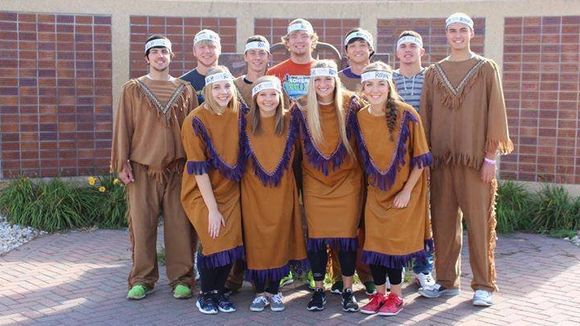“There is a distinct difference between appreciating a culture and appropriating a culture, and this bastardized version of a very real and prevalent culture is unacceptable,” Becky Plumage, a South Dakota native, wrote in her petition to try to knock some sense into the Watertown School Board.
It’s about this:

“I was really surprised that this sort of thing was still going on,” Plumage, an Ohio State University graduate of Assiniboine descent, tells Sioux Falls Argus Leader columnist Stu Whitney.
Ki-Yi Days started in 1924 in which a homecoming “chief” and “princess” were named to try to build excitement for the big game against Brookings.
In the face of criticism in a state where 9 percent of the population is Native American, Watertown has “dug in”, Whitney says.
Time moves on and perceptions change. Traditions don’t last forever. In 1994, then-Watertown principal Randy McCune moved to change the school’s logo, which included a drawing of an Indian clad in a loincloth and war bonnet, over the objections of many students and community members.
“It was time to correct our attitudes and sensitivities toward Native Americans,” McCune said at the time.
So where is such leadership today?
Though current superintendent Lesli Jutting declined to speak to the Argus Leader, she sent a response to Plumage that talked of “educating and healing” after discussions with outside voices that included William Mendoza, policy advisor to President Obama on Native American issues.
“We talked about a plan to move forward,” Jutting wrote, “and that plan has already begun. Education is happening. As a community, we are moving forward and need to be allowed time to do so productively. Legends and traditions continually need to be evaluated and reviewed, and change needs to happen.”
Those are encouraging words, but only if Watertown follows through. Change is hard, especially when it involves generational strands that connect communities. We value legacies that link us to more carefree days.
South Dakota has the third-highest percentage of Native Americans in the nation.
